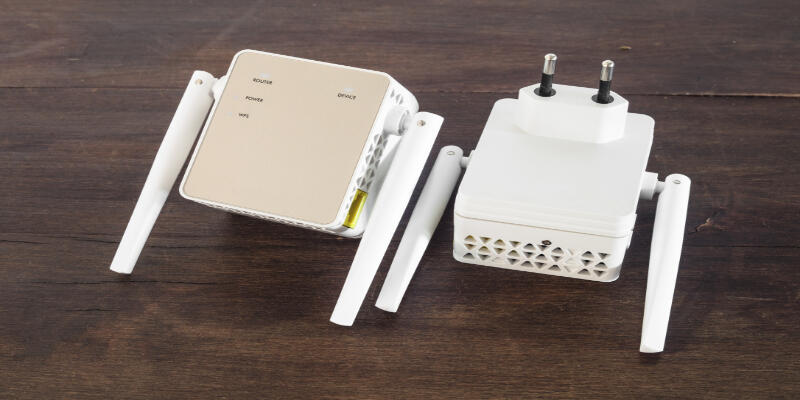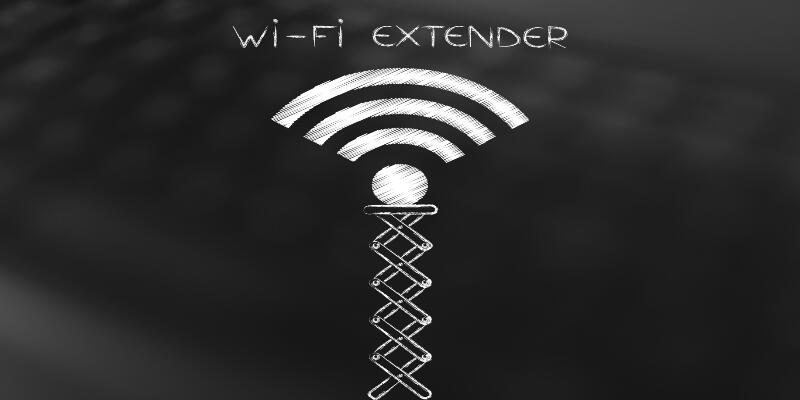Disclaimer: This post may contain affiliate links, meaning we get a small commission if you make a purchase through our links, at no cost to you. For more information, please visit our Disclaimer Page.
WiFi extenders go a long way to enhance the strength and coverage of your home or office WiFi network. This ensures that every part of your home is properly covered. But, not all WiFi extenders offer the same capacity and coverage range. So, before you invest in a WiFi extender, it is important to know how far a WiFi extender reaches in real life.
WiFi extenders cover different ranges – there are short range and long range models. Their range varies between 75 and 2,500 feet. But, the advertised range doesn’t determine actual reach in real life. So, consider other factors such as their design (wireless vs wired) and the position during setup.
The sections below offer an in-depth breakdown of how far WiFi extenders offer coverage.
In this post you will get answers to questions such as how far do they reach in real life? What factors to consider when choosing an extender’s range? And, is there a way to increase their range?
Table of Contents
What Exactly Do WiFi Extenders Do And How Do They Work?
Like other WiFi signal boosters, WiFi extenders improve coverage around your home or office. WiFi extenders function by extracting the speed from your main router.
The extender amplifies the speed from the router. The amplified speed enhances the signal in dead zones or poor signal areas in your home or office.
WiFi extenders literally work as a bridge between your main router and a dead zone or poor signal area. For example, you may have a WiFi network designed to offer coverage around your entire home.
However, chances are that you will not receive enough signal in some areas of the house.
You can refer to these areas as dead zones or poor signal areas. Now, your WiFi network’s router broadcasts omnidirectional signals. When connected to an extender, the extender picks up these signals and enhances them to a larger area.
This creates a ripple effect- filling up the dead zones so your entire home receives sufficient signal strength.
What Is The Common Range For WiFi Extenders?
As mentioned above, WiFi Extenders offer different coverage ranges based on their design. You will find some models with a coverage range as low as 50 feet. On the other hand, you can find options that extend as far as 2,500 feet.
Yet, as a consumer, you shouldn’t really concern yourself with just any WiFi extender. You want to consider your needs – what range is most important to you?! After all, as with other products, you can find extenders of different price ranges.
Generally, long range extenders cost more than short range ones. You don’t want to invest in a long range extender if you have a small home. You will be wasting your money on an extravagant product while you have very little space to cover.
What Factors Affect The Range Of A WiFi Extender?
WiFi extenders have a preset range. For example, you may come across a 75-feet signal range extender – this is its preset range. However, in a real-life scenario, the 75 feet range may not be the true value.
This is because several other factors play a role in determining the range. Before you even think of environmental factors (e.g. their position), the design alone affects the range. WiFi extenders differ slightly from other signal boosters such as repeaters.
You can find an assortment of wired and wirelessly operated WiFi extenders. The wireless or wired design alone affects their range. Opting for the wired option provides a stronger and reliable connection.
A wired connection offers minimal interference from nearby wireless devices or thick walls. Wireless extenders on the other end can be used for long range applications. Wireless extenders are a better long range option because they don’t have any bulky wires to deal with.
Other factors that affect WiFi extender range include;
- The positioning of the extender and router
- Damaged cables if you are using wired extenders
- Poor choice of WiFi extender/ not enough extenders – you may have to connect one extender to another
How Do I Choose The Range Of My WiFi Extenders?
When choosing the ideal range for your WiFi extender, you want to consider the area where you will use it. As mentioned above, WiFi extenders help to enhance WiFi signals across the space you are in.
In fact, some models can even extend the range to the exterior of your building.
Generally, affordably priced extenders can extend coverage from one room to the other. For example, you can use them to extend the signal from the living room to your bedroom. These extenders normally have a range of about 150 to 200 feet.
Alternatively, you can find WiFi extenders that cost a little more and cover a larger area. These extenders allow you to extend your signal to the exterior of your building. For example, you can extend your WiFi signal from the living room to the garden.
These types of extenders typically have a range of about 300- 400 feet. However, the types of WiFi extenders outlined above are ideal for smaller spaces.
If you want to cover more space, you may have to opt for long range extenders that offer more coverage. Remember, WiFi extenders come as wired or wireless extenders. Both types of extenders have their benefits and drawbacks.
Using wired extenders, you don’t have to worry about thick walls or other wireless devices. But, their disadvantage is that you may have to deal with cumbersome cables in your home or office.
Wireless extenders, on the other hand, come with the advantage of having no wires. Because of the wireless design, most long range WiFi extenders are actually wireless. Their disadvantage is that they may be susceptible to interferences.
What If I Need More Coverage?
If you happen to have a larger space, a single WiFi extender, even one long range, may not be enough. A standard extender may not be enough for multi-floored buildings or larger perimeters.
The good news is that there is a solution to this problem. You can connect one WiFi extender to another WiFi extender to increase the range.
For example, you can distribute more than one extender on different floors in a multi-floor building. You can connect more than one extender through the main router.
For the best performance and reliable connection, don’t connect the two extenders wirelessly. Instead, link them by connecting each one to the main router and use a different network name for each.
How To Improve The Range Of Your WiFi Extender?
The one advantage that WiFi extenders have is their portability and compact build. Thanks to this design, you can use the extender itself to improve its coverage range.
One of the easiest ways to improve the coverage range is by simply moving around the extender.
Moving the extender around allows you to find the right spot to cater to the dead zone in question. However, the extender still has to be within the router’s range and be able to reach the poor signal area or dead zone. Other factors you should consider include the working mechanism.
If you use a wireless extender, make sure you position it and the main router around areas with minimal distractions. After all, even a wall can be quite detrimental to the extender’s range.
Last, to improve the range of your WiFi extender, first, understand the WiFi connection in your home. I learned this trick during the beginning of the lockdown. When we went into the first lockdown last year, I’d realized that my WiFi network had multiple dead zones in my home.
Bad enough, my home office was amongst the poor signal areas. As I transitioned into remote work, I needed to improve the connection. After a few tests on my devices, I realized I needed to invest in a WiFi extender to complement my main router.
But, to ensure that I find the right option for my home, I conducted a survey around the house. I have a pretty standard two-story and 3 bedrooms home. So, to conduct my survey, I downloaded a WiFi analyzer app on my phone.
To use it, I launched it on my phone and simply walked around the entire house; letting it do its job. With the results, it was easier to understand where the signal was weakest and where it was the strongest.
Using this data, I managed to score the right WiFi extender for my home – with the right range. It’s been months since I ordered and installed my WiFi extender- and I can confidently say I can’t complain!
The Bottom Line
Bottom line, with the range of WiFi extenders, they really don’t have a standard one. You can find a vast array of short range and long range extenders. Instead, you want to focus on the needs of your home or office.
If you have a smaller space, there’s no need to invest in a long range extender – or vice versa! Although, besides the actual extender range, other factors affect its reach as well. For example, a wireless extender has distorted reach in real life compared to a wired one.
Obstacles such as walls or nearby wireless devices can block a wireless connection. Plus, your extender’s position during setup affects the range – whether or not it’s wired. So, two factors determine the reach of your extender in real life.
Consider both the actual range and the environmental range. It is also important to remember you may experience slow internet speed when you use an extender. This has nothing to do with the extender’s range.
Instead, it simply means that using an extender will somewhat affect the speed. When you connect your device and main router to an extender, internet speed slows down because of the multiple media. You will notice this when using more data for activities such as gaming or video streaming.


